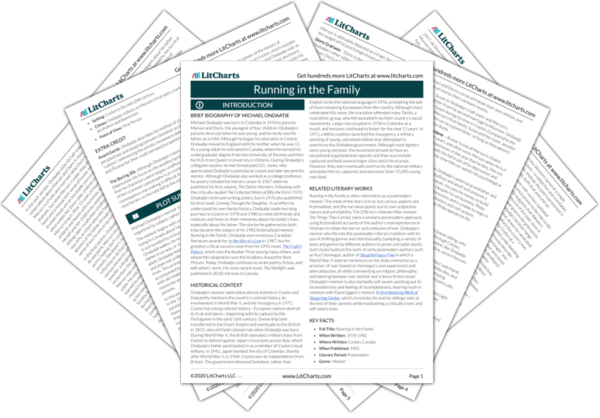The false maps of Ceylon (modern-day Sri Lanka) that Ondaatje’s brother hangs on his wall represent the unreliability of a singular, Western historical narrative while also demonstrating the way that many personal memories of the same event will gradually draw one closer to the truth. As European explorers first caught glimpses of Ceylon—usually only seeing it from a single angle—they drew maps variously describing its shape as an “amoeba,” a “squat rectangle,” and various other misinterpretations, symbolizing the way that “history,” when told from a single perspective, is most likely to be biased and leave out other perspectives or opinions. However, as the Europeans drew more and more maps that built on each other’s knowledge, their description of Ceylon’s shape gradually drew closer to the truth, symbolizing the way that many memories and perspectives of the same event will form a more reliable picture of the past.
False Maps Quotes in Running in the Family
On my brother’s wall in Toronto are the false maps. Old portraits of Ceylon. The results of sightings, glances from trading vessels, the theories of sextant. The shapes differ so much they seem to be translations […] growing from mythic shapes to eventual accuracy.

Unlock explanations and citation info for this and every other Running in the Family quote.
Plus so much more...
Get LitCharts A+









